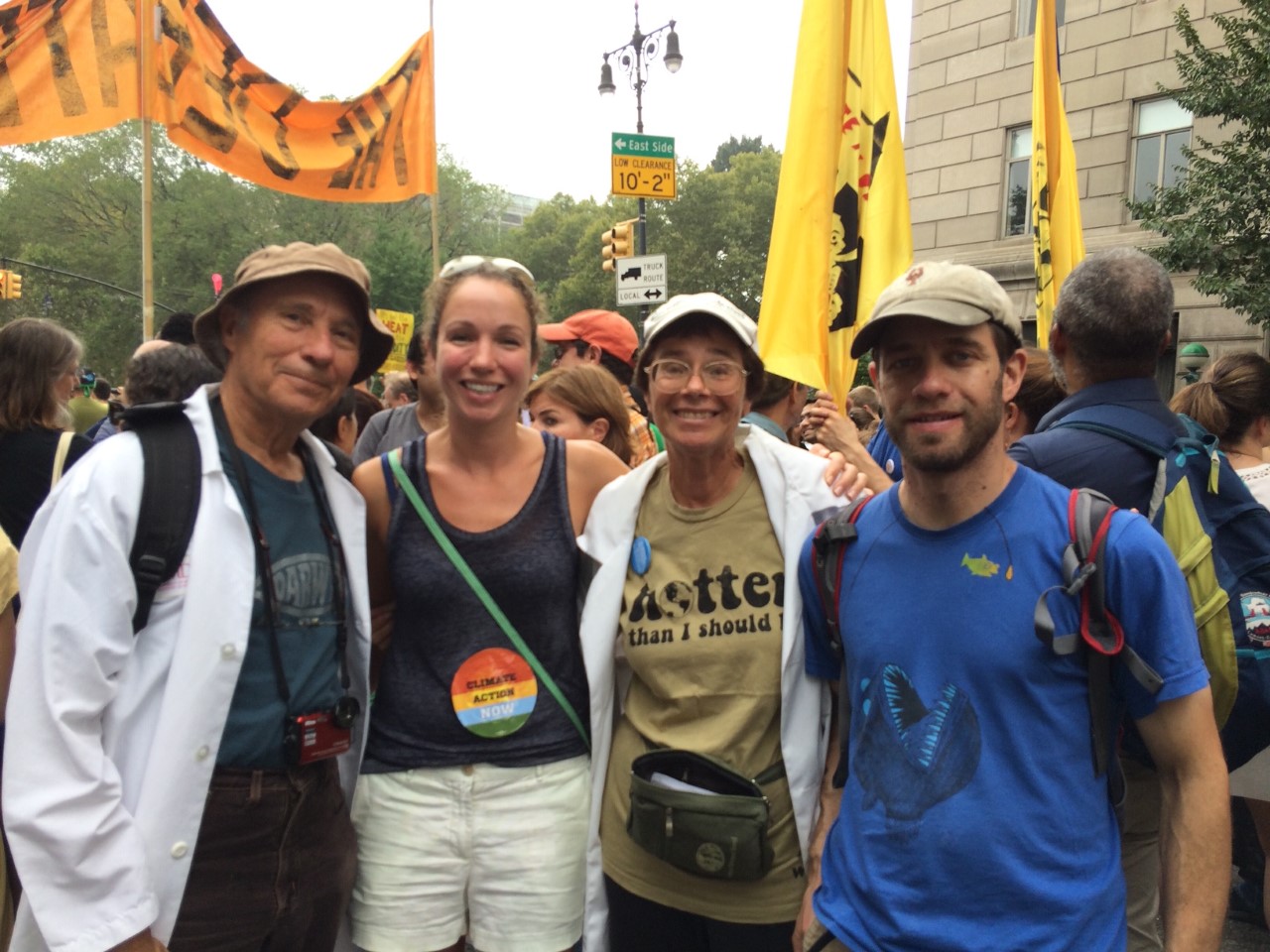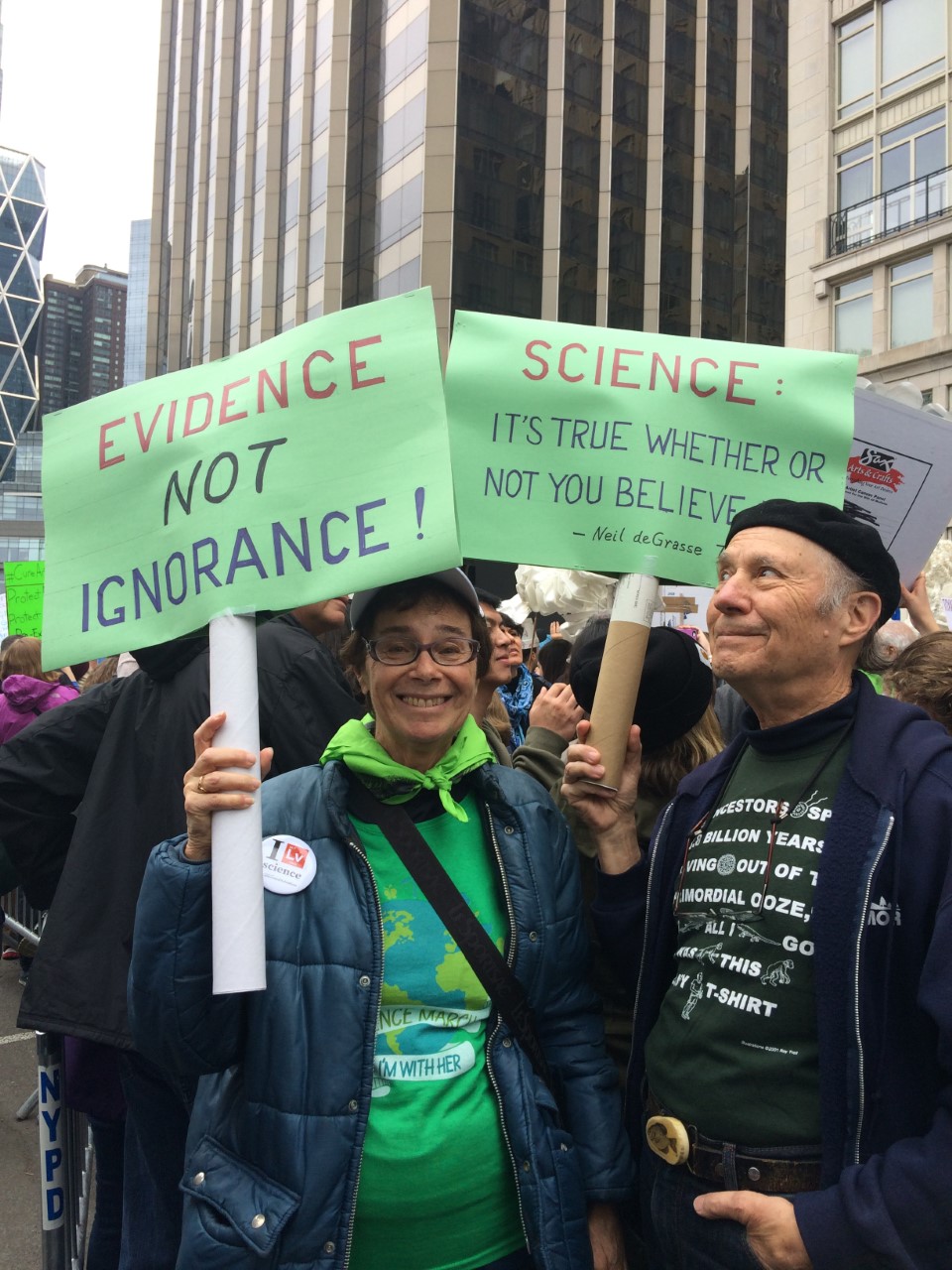2015 Cimate March before the Paris agreement. We are with two former grad students, Allison Candelmo and the late James MacDonald.
Government Service and Policy Experience
In the 1980s I grew concerned about the country’s environmental policies. With my expertise in pollution, I felt that the Reagan EPA was not following good science in their policies and wanted to go to Washington to try to influence environmental policy. I was able to win a AAAS Congressional Science Fellowship for 1983-84 (co-sponsored by the American Society of Zoologists [now Society of Integrated and Comparative Biology]). My placement was with the Senate Environment and Public Works Committee. I worked on many issues that were not directly related to my expertise, but were opportunities to learn about and work on other environmental laws and policies, including groundwater, the Safe Drinking Water Act and Resource Conservation and Recovery Act, which were up for renewal that session. A number of emergency issues also arose – EDB -ethylene dibromide, a very toxic pesticide used in grain storage, and groundwater contamination by gasoline from leaking underground storage tanks. I had the opportunity to watch and contribute in a minor way to many hearings.
After the fellowship year, I thought about continuing in DC, but with my family and Professor position in NJ I returned, but continued to stay involved in government and policy. I had a very part-time appointment in a science group within the policy office of EPA, which brought me down to DC several times a year. My year working in Congress and knowledge of the Safe Drinking Water Act was the reason I was appointed to the Drinking Water Quality Institute, which advises NJDEP in setting maximum contaminant levels (MCLs) for different contaminants. I also became a member of the Board of the Group for the South Fork (now the Group for the East End), an environmental group in eastern Long Island where we have a summer home.
I returned to Washington 1988-1990 as a “rotator” at the National Science Foundation where I was in the Undergraduate Science Engineering and Mathemetics Education. This included programs for faculty, students, curriculum development, laboratory development, and instrumentation; much program planning and grant administration, coordination with other divisions within NSF, and interaction with scientists in the academic community. I gave out grants for improving Biology education, often with improved laboratory equipment. I was also able to do a survey of undergraduate Environmental Science programs. I was back in DC again in 1992 for a six-month stint at the EPA Office of Ocean and Coastal Protection, where I wrote reports on environmental health of the oceans.
I served on the Marine Board of the National Academies of Science, and shepherded a report on ballast water and invasive species through the process.
Most of my continued involvement has been through other advisory committees – several committees that reported to EPA’s Science Advisory Board, such as the Science and Technical Awards Committee. The Endocrine Disruptor Screening and Testing Advisory Committee (EDSTAC) was initially hostile and dysfunctional, but with the assistance of an excellent mediator, was eventually able to work together and produce a report which was the basis of EPA’s screening and testing for substances that affect the endocrine system. I have also served on many grant and fellowship evaluation committees for NOAA, EPA, and NSF.
For about 10 years I was a member of the National Sea Grant Advisory Board. Our function was to review the various Sea Grant programs around the country to evaluate how they were performing in relation to the goals they had set for themselves. I traveled to many SG programs for site visits, including Hawaii, Puerto Rico, Ohio, Wisconsin, Virginia, Florida, Texas, and California. Our regular meetings were in NOAA headquarters in Silver Spring MD. I enjoy continued involvement with this program, one that is always greatly underfunded and under-appreciated by the government.
When the NJ Department of Environmental Protection decided to set up a Science Advisory Board, I was asked to Chair it, and have been doing so for ten years. I have also been co-chairing the Science and Technical Advisory Committee of the NY/NJ Harbor Estuary program for many years.
Service to NGOs: I am also involved in environmental activism. In addition to the Group for the South Fork, I have been involved in the Sierra Club for many years, serving on committees and the Exec. Committee of the NJ Chapter in the late 1980s, and on the National Coastal Committee, which eventually became the “Marine Team” for the past ten or so years. Since the 2016 election I have been to many marches and protests.


At the March for Science in NYC, 2017